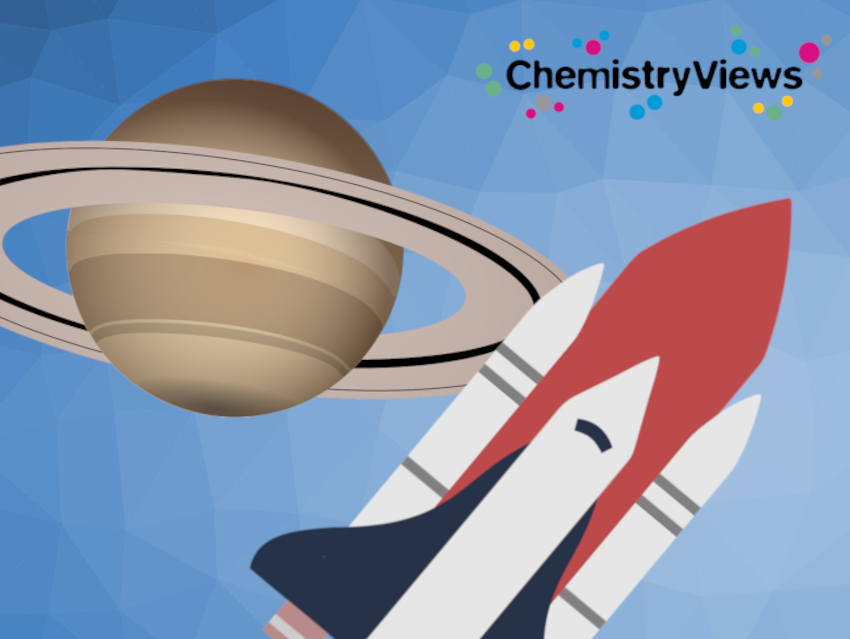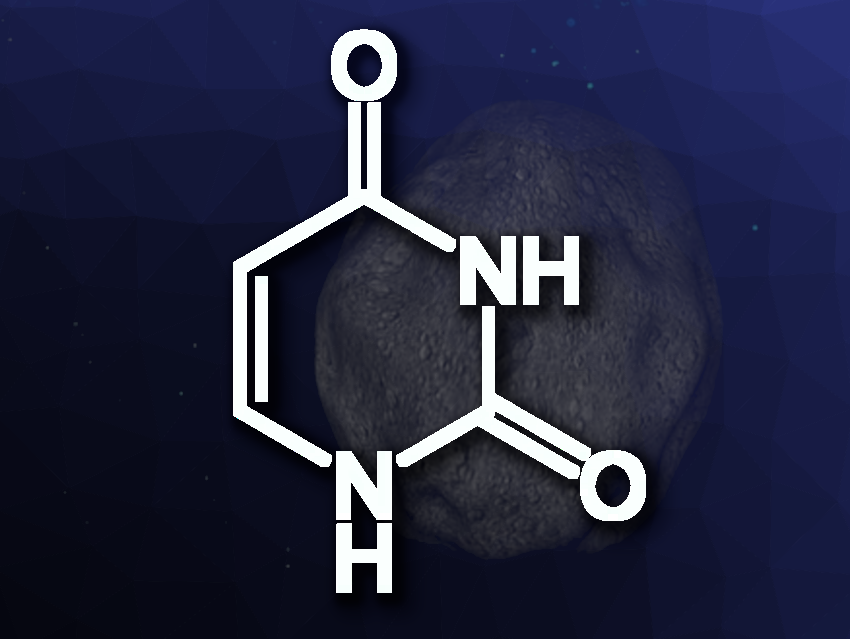The near-Earth carbonaceous asteroid Ryugu contains the RNA nucleobase uracil, along with other nitrogen-containing carbocycles. These findings come from the analysis of two samples collected by the Hayabusa2 spacecraft in February 2019 and returned to Earth in December 2020, as reported by Yasuhiro Oba, Hokkaido University, Sapporo, Japan, Yoshinori Takano, Japan Agency for Marine-Earth Science and Technology (JAMSTEC), Yokosuka, Japan, and Keio University, Yamagata, Japan, and colleagues.
In 2014, the Hayabusa2 spacecraft was sent to Ryugu on an asteroid sampling mission. The hope was to obtain pristine organic material once formed in our solar system and unaffected by entering Earth’s atmosphere. Such material is preserved in carbonaceous asteroids like Ryugu. In two brief touchdowns, Hayabusa2 was able to collect soil samples of Ryugu with a total mass of 5.4 g: one from the surface, the other from material buried at a depth of 1 m and released by ramming a projectile into the surface.
A first analysis of the material collected was published in September 2022 [2]. It showed the presence of a wide range of organic molecules including amino acids and carboxylic acids. In the new analysis, the team looked specifically for nitrogen heterocycles.
Nucleobase from Space
Elemental composition and infrared spectral analysis indicated the presence of carbon, nitrogen, and oxygen, as well as –OH, –NH, and –CH functional groups. The researchers subjected the samples to high-resolution mass spectrometry combined with high-performance liquid chromatography (HPLC) specifically designed to detect substances on the parts-per-billion to parts-per-trillion level. This analysis revealed the presence of nitrogen heterocycles identified as uracil, imidazole-2-carboxylic acid, imidazole-4-carboxylic acid, nicotinic acid, and isonicotinic acid.
The detection of nitrogen heterocycles confirms previous results from meteorite analysis. For example, scientists have already identified all five canonical nucleobases in carbonaceous chondrites found on Earth. Carbonaceous chondrites are a special class of stony meteorites that contain high amounts of carbon in the form of graphite, carbonates, organic compounds, water, and minerals. Astrophysicists believe that these materials were formed in the early stages of the Solar system and then preserved in these objects as they traveled through space for billions of years.
Ryugu itself was probably once a part of a larger body that was destroyed in a collision with another sizeable body millions of years after its formation. According to the theory, the asteroid’s material was heated by radioactivity, but the temperature never exceeded 50 °C. During this period of heating, organic molecules were formed by reactions with water and were later frozen and preserved thanks to the icy condition in space.
Cosmic Rays and Extraction Methods
Only cosmic rays hitting the asteroid’s surface could have altered the chemicals since then. Therefore, the Hayabusa2 mission also collected subsurface material. Indeed, the uracil content was three times higher in the buried samples. The researchers speculate that some of the molecules may have been destroyed on the asteroid’s surface.
However, the concentration of the nitrogen heterocycles identified was low, even for this type of analysis, not exceeding a few tens in the parts-per-billion range. It is, therefore, possible that some molecules, including other nucleobases, were not detected. “This [non-detection] does not necessarily preclude the possibility of those nucleobases being present in the Ryugu samples, they may just be below the detection limit under the experimental conditions we employed,” the researchers state.
Another possibility is that the sample preparation conditions have altered the molecular composition toward uracil. For analysis, the researchers extracted the molecules by soaking the Ryugu particles in hot water for 20 h. This was followed by acid hydrolysis using concentrated HCl, a process that can deaminate cytosine, forming uracil. Indeed, results from meteorite samples showed that their uracil content “grew” when the extracted samples were treated by acid hydrolysis.
The Importance of Nitrogen Heterocycles
Each of the nitrogen heterocycles identified plays an essential role in life on Earth. Uracil is known as one of the nucleobases present in RNA, and RNA is thought to have been the first hereditary molecule on Earth. Nicotinic acid, also known as vitamin B3, is an essential component of many coenzymes. In addition, imidazoles can act as organic catalysts and may have been involved in coupling nucleotides or amino acid monomers together to form the first nucleic acids or peptides on primordial Earth.
The study identified life-giving nitrogen heterocycles in an asteroid. However, it was not able to shed any light on how these complex molecules were formed from simpler precursors. Researchers believe that they were formed from formaldehyde, ammonia, and HCN reacting with water, but these simpler molecules were not identified in the present study. Even urea, another molecule commonly found in carbonaceous meteorites, was not identified in Ryugu’s samples.
The researchers have hope, though, with more asteroid samples on their way to Earth. Astronomers are awaiting the return of 100 g of carbon-rich soil from the near-Earth asteroid Bennu, collected by NASA’s OSIRIS-Rex spacecraft and scheduled to land on Earth on September 24 this year.
References
[1] Y. Obe et al., Uracil in the carbonaceous asteroid (162173) Ryugu, Nat. Commun. 2023, 14, 1292. https://doi.org/10.1038/s41467-023-36904-3
[2] H. Naraoka et al., Soluble organic molecules in samples of the carbonaceous asteroid (162173) Ryugu, Science 2023, 379(6634). https://doi.org/10.1126/science.abn9033
Also of Interest
 Collection: Chemistry & Space
Collection: Chemistry & Space
A compilation of articles on chemistry related to outer space


